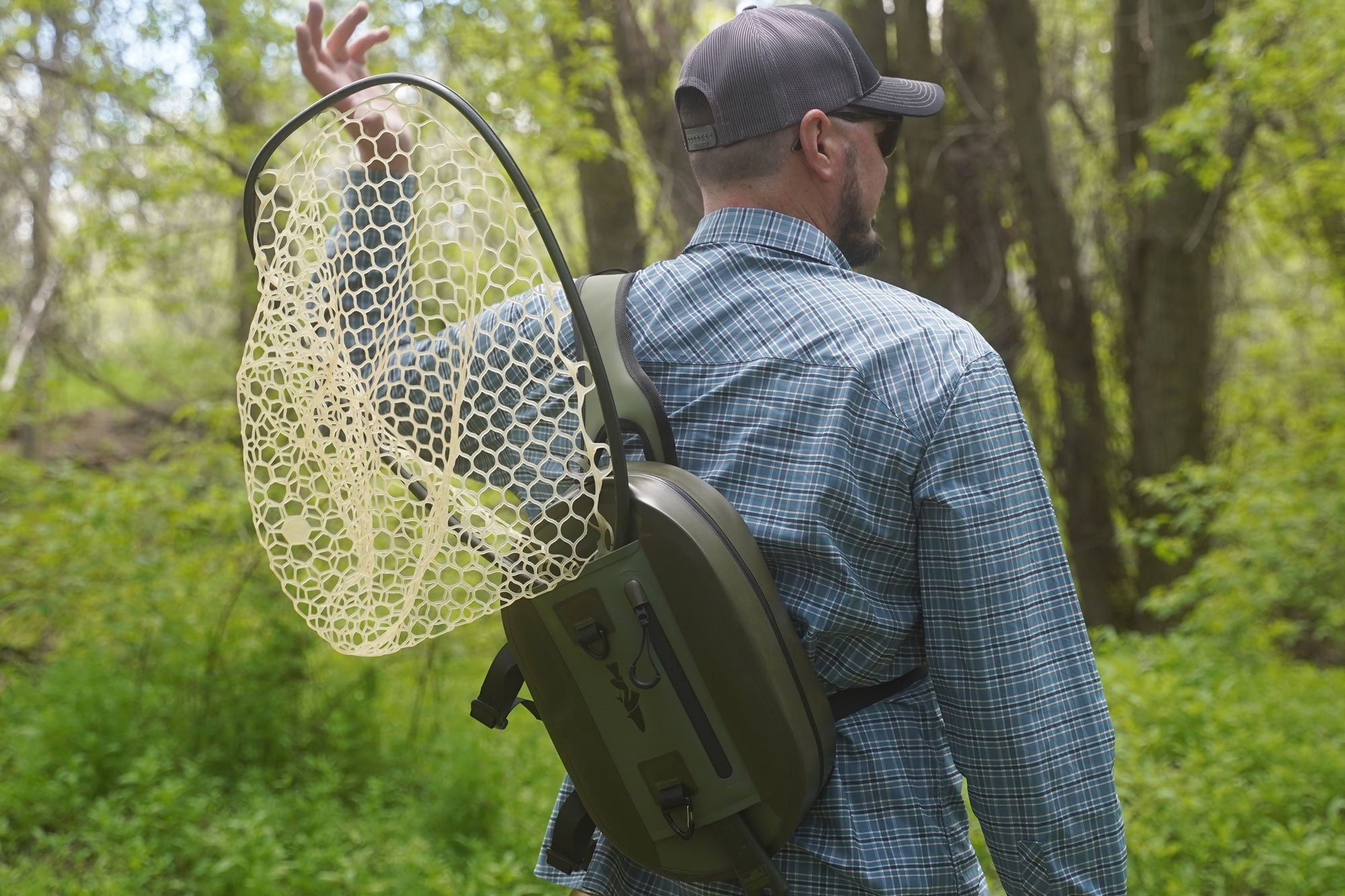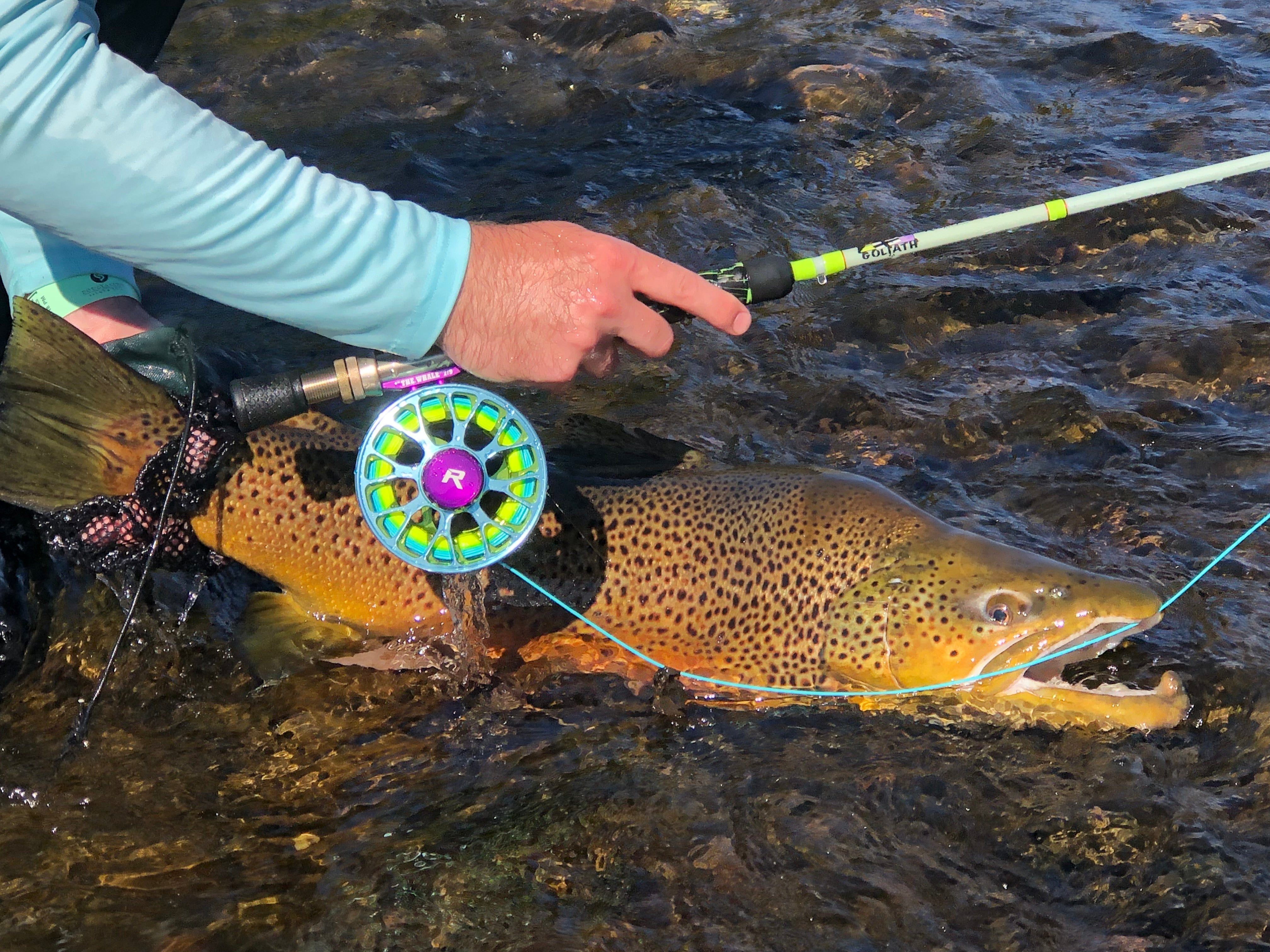Master the art of adapting streamer fishing techniques throughout the year with seasonal patterns, presentations, and strategies that consistently produce fish in any conditions
The Seasonal Advantage: Fishing Nature's Calendar
Successful streamer fishing requires understanding that fish behavior, food sources, and environmental conditions change dramatically throughout the year. While many anglers fish the same patterns with identical techniques regardless of season, expert streamer fishers adapt their approach to match natural cycles, fish behavior patterns, and seasonal food availability for consistent year-round success.
This comprehensive guide reveals the seasonal secrets used by professional guides and tournament champions to maintain high catch rates throughout the entire year, regardless of weather, water conditions, or fish behavior patterns.
WATCH: How to Choose a Streamer Pattern
Understanding Seasonal Fish Behavior
Spring Awakening Patterns
Post-Winter Recovery:
- Increased Metabolism: Fish begin feeding more actively
- Energy Needs: Building energy after winter dormancy
- Cautious Feeding: Still wary from winter survival mode
- Gradual Activity: Progressive increase in feeding activity
- Temperature Dependence: Activity tied closely to water temperature
Pre-Spawn Behavior:
- Territorial Aggression: Males become increasingly aggressive
- Feeding Intensity: Heavy feeding before spawning energy expenditure
- Structure Orientation: Fish concentrate near spawning areas
- Timing Variations: Species-specific spawning schedules
- Opportunity Windows: Brief periods of intense activity
Spring Water Conditions:
- Temperature Fluctuations: Daily temperature swings affect activity
- Flow Changes: Runoff and rain affecting water levels
- Clarity Variations: Changing water clarity throughout season
- Food Availability: Increasing insect and baitfish activity
- Habitat Changes: Water level changes exposing new structure
Summer Peak Activity
Maximum Metabolism:
- High Energy: Fish operating at peak efficiency
- Aggressive Feeding: Active pursuit of substantial meals
- Competitive Behavior: Competition for food and territory
- Opportunistic Feeding: Willingness to expend energy for large meals
- Extended Activity: Longer daily feeding periods
Thermal Considerations:
- Temperature Refugia: Fish seek cooler water during heat
- Depth Migration: Movement to cooler deep water
- Timing Shifts: Feeding during cooler periods
- Structure Dependence: Heavy cover for thermal protection
- Oxygen Requirements: Need for well-oxygenated water
Summer Food Sources:
- Peak Baitfish: Maximum baitfish populations
- Terrestrial Abundance: Land insects falling into water
- Insect Activity: Peak aquatic insect populations
- Crayfish Activity: Maximum crayfish availability
- Diverse Options: Multiple food sources available
Fall Feeding Frenzy
Pre-Winter Preparation:
- Intensive Feeding: Heavy feeding before winter dormancy
- Fat Accumulation: Building energy reserves for winter
- Opportunistic Behavior: Taking advantage of all feeding opportunities
- Aggressive Response: Willing to expend energy for substantial meals
- Extended Seasons: Feeding continues into cold weather
Baitfish Concentrations:
- Schooling Behavior: Baitfish forming dense schools
- Predator Following: Trout following baitfish concentrations
- Migration Patterns: Fish following food sources
- Easy Feeding: Concentrated food creating easy feeding
- Competition: Multiple predators competing for food
Winter Survival Mode
Reduced Metabolism:
- Energy Conservation: Minimizing energy expenditure
- Selective Feeding: Only feeding when energy positive
- Reduced Activity: Limited daily feeding periods
- Deep Water: Seeking thermal stability
- Minimal Movement: Staying in secure holding areas
Survival Priorities:
- Energy Efficiency: Every calorie must count
- Security: Avoiding predators and threats
- Thermal Stability: Maintaining body temperature
- Minimal Stress: Avoiding unnecessary energy expenditure
- Opportunistic: Taking advantage of rare feeding opportunities
Spring Streamer Strategies
Early Spring Patterns
Cold Water Streamers:
- Dark Colors: Black, brown, and natural tones
- Moderate Sizes: #6-10 patterns for reasonable meals
- Natural Materials: Marabou and rabbit for subtle action
- Weighted Patterns: Get deep to cold water fish
- Proven Designs: Stick with established patterns
Essential Spring Patterns:
- Woolly Bugger: Classic pattern in dark colors
- Zonker: Natural rabbit strip patterns
- Muddler Minnow: Sculpin imitation for bottom feeding
- Leech Patterns: Dark leech imitations
- Streamers: Traditional patterns in spring colors
Spring Presentation Techniques
Slow and Steady:
- Deliberate Retrieves: Slow, methodical presentations
- Long Pauses: Allow fish time to inspect and strike
- Deep Focus: Fish deep, stable water areas
- Patient Approach: Extended time between strikes
- Natural Action: Subtle, lifelike movement
Temperature-Based Tactics:
- Warming Trends: Increase activity during warm periods
- Cold Snaps: Slow down during temperature drops
- Daily Timing: Fish during warmest parts of day
- Thermal Areas: Target sun-warmed areas
- Gradual Changes: Adapt slowly to changing conditions
Spring Water Reading
Structural Focus:
- Deep Pools: Primary holding areas during cold periods
- Protected Areas: Sheltered locations from current and cold
- Thermal Areas: Sun-warmed shallows during warm periods
- Spawning Areas: Pre and post-spawn concentrations
- Stable Water: Areas least affected by runoff
Flow Considerations:
- Runoff Timing: Understanding snowmelt patterns
- Rain Effects: Impact of spring rain on fishing
- Clarity Changes: Adapting to changing water clarity
- Flow Variations: Fishing different flow levels
- Safety: Extra caution during high water periods
WATCH: Spring streamer tactics and techniques
Summer Streamer Excellence
Peak Season Patterns
Aggressive Streamers:
- Large Sizes: #2-6 patterns for substantial meals
- Bright Colors: Attractor patterns for active fish
- Action Patterns: Flies with built-in movement
- Articulated Designs: Jointed patterns for maximum action
- Innovative Patterns: Modern designs for peak season
Summer Streamer Selection:
- Sculpin Patterns: Large bottom-dwelling imitations
- Baitfish Streamers: Realistic minnow imitations
- Crayfish Patterns: Large crayfish imitations
- Terrestrial Streamers: Large terrestrial imitations
- Attractor Patterns: Bright, aggressive designs
High-Energy Presentations
Fast and Aggressive:
- Rapid Retrieves: Quick, aggressive stripping
- Violent Action: Sharp, erratic movements
- Multiple Speeds: Varying retrieve speeds
- Trigger Techniques: Movement designed to provoke strikes
- Active Fishing: Constant movement and activity
Structure Tactics:
- Ambush Fishing: Target known ambush points
- Cover Fishing: Work heavy cover and structure
- Edge Fishing: Fish along structure transitions
- Deep Structure: Target summer deep water structure
- Current Breaks: Fish areas of reduced current
Summer Timing Strategies
Daily Patterns:
- Early Morning: Prime feeding before heat
- Late Evening: Extended feeding into darkness
- Night Fishing: Peak summer opportunities
- Midday Deep: Deep water during heat
- Weather Windows: Fish during frontal activity
Thermal Management:
- Cool Water: Target thermal refugia
- Depth Fishing: Fish deep during heat
- Shade Focus: Target shaded areas
- Current: Fish well-oxygenated flowing water
- Spring Influence: Target spring-fed areas
Fall Streamer Mastery
Pre-Winter Patterns
Large Meal Focus:
- Big Patterns: #1/0-4 hooks for substantial meals
- Baitfish Imitations: Match concentrating baitfish
- Natural Colors: Realistic color schemes
- Proven Producers: Use established fall patterns
- Trophy Patterns: Designs targeting largest fish
Fall Pattern Selection:
- Large Sculpins: Big bottom-dwelling patterns
- Minnow Imitations: Realistic baitfish patterns
- Articulated Flies: Jointed patterns for maximum action
- Traditional Patterns: Time-tested fall producers
- Innovation: Try new patterns during peak feeding
Aggressive Fall Techniques
High-Energy Presentations:
- Fast Retrieves: Match aggressive fall feeding
- Erratic Action: Trigger competitive feeding responses
- Structure Focus: Target known feeding areas
- Multiple Techniques: Use variety of presentations
- Persistent Effort: Fish longer and harder
Fall Water Reading:
- Feeding Areas: Known fall feeding concentrations
- Migration Routes: Fish movement corridors
- Baitfish Concentrations: Areas with dense baitfish
- Structure: Cover providing ambush opportunities
- Deep Access: Areas with nearby deep water
Trophy Opportunities
Fall Trophy Tactics:
- Large Patterns: Use biggest streamers of year
- Prime Water: Focus on best trophy areas
- Extended Effort: Fish longer for trophy opportunities
- Proven Techniques: Use methods with track records
- Equipment: Use best tackle for trophy potential
Peak Season Timing:
- Weather Windows: Fish during stable periods
- Frontal Activity: Fish before and after weather changes
- Extended Seasons: Take advantage of mild weather
- Prime Periods: Focus on peak feeding times
- Persistence: Continue when others quit
Winter Streamer Survival
Cold Water Adaptations
Subtle Patterns:
- Natural Colors: Muted, realistic color schemes
- Smaller Sizes: #8-12 patterns for energy efficiency
- Soft Materials: Marabou and rabbit for subtle action
- Weighted Flies: Get deep to winter holding areas
- Simple Designs: Basic patterns for cold water effectiveness
Winter Streamer Selection:
- Midge Streamers: Small patterns imitating winter food
- Leech Patterns: Natural colors in moderate sizes
- Small Baitfish: Realistic small minnow imitations
- Traditional Patterns: Time-tested winter producers
- Local Patterns: Flies specific to local winter conditions
Minimal Energy Presentations
Ultra-Slow Techniques:
- Crawling Retrieves: Extremely slow presentations
- Long Pauses: Extended stops between movements
- Dead Drift: Allow natural current movement
- Minimal Action: Subtle, energy-efficient movement
- Patient Approach: Allow extended time for fish response
Winter Water Focus:
- Deep Holes: Primary winter holding areas
- Thermal Stability: Areas with stable temperatures
- Protected Water: Sheltered from weather and current
- Spring Influence: Spring-fed areas with stable temperatures
- Minimal Current: Areas requiring minimal energy expenditure
Winter Timing and Conditions
Optimal Conditions:
- Mild Weather: Fish during warmest periods
- Stable Pressure: Avoid fishing during rapid pressure changes
- Late Morning: Fish after sun has warmed water
- Thermal Windows: Take advantage of warming trends
- Protected Periods: Fish sheltered areas during harsh weather
Equipment Adaptations:
- Cold Weather Gear: Appropriate clothing and equipment
- Line Management: Prevent icing and freezing
- Safety Equipment: Extra safety precautions for winter
- Backup Gear: Redundant equipment for emergencies
- Simplified Rigs: Use simple, reliable setups
WATCH: Fall and winter streamer strategies
Equipment Adaptations by Season
Spring Equipment Needs
Variable Conditions Gear:
- Layer System: Clothing for changing temperatures
- Waterproof Gear: Protection from spring rain
- Backup Equipment: Extra gear for equipment failure
- Safety Gear: High water safety equipment
- Versatile Tackle: Gear for varied conditions
Line and Leader Systems:
- Sinking Lines: Get deep to cold water fish
- Heavy Leaders: Handle runoff debris and obstacles
- Quality Components: Reliable gear for challenging conditions
- Backup Systems: Spare leaders and tippet
- Maintenance: Extra care for gear in wet conditions
Summer Equipment Optimization
Hot Weather Gear:
- Sun Protection: Clothing and hats for sun protection
- Cooling Systems: Gear for hot weather comfort
- Hydration: Water and electrolyte replacement
- First Aid: Heat-related emergency supplies
- Durable Gear: Equipment for extended use
Peak Performance Tackle:
- Heavy Rods: 7-8 weight for large patterns and fish
- Quality Lines: Best lines for peak season performance
- Strong Leaders: Heavy tippet for aggressive fish
- Large Flies: Storage for big summer patterns
- Landing Gear: Equipment for large, active fish
Fall Equipment Priorities
Weather Transition Gear:
- Versatile Clothing: Gear for changing weather
- Weather Protection: Rain and wind protection
- Layering Systems: Adaptable clothing systems
- Equipment Protection: Waterproof storage
- Emergency Gear: Safety equipment for weather changes
Trophy Tackle:
- Premium Rods: Best rods for trophy opportunities
- Heavy Lines: Lines for large patterns and fish
- Strong Leaders: Tippet for trophy fish
- Large Nets: Landing gear for big fish
- Quality Storage: Protection for valuable tackle
Winter Equipment Essentials
Cold Weather Gear:
- Insulation: Warm clothing for cold conditions
- Waterproof Protection: Dry suits and waders
- Hand Warmers: Keep hands functional
- Safety Equipment: Cold water safety gear
- Emergency Supplies: Survival gear for winter conditions
Simplified Tackle:
- Reliable Rods: Dependable gear for harsh conditions
- Simple Lines: Basic lines for winter fishing
- Strong Leaders: Durable leader systems
- Essential Patterns: Basic fly selection
- Backup Gear: Redundant equipment for reliability
Seasonal Pattern Selection
Temperature-Based Choices
Cold Water Patterns:
- Dark Colors: Black, brown, olive predominate
- Natural Materials: Marabou, rabbit, and natural fibers
- Subtle Action: Gentle, lifelike movement
- Moderate Sizes: Energy-efficient pattern sizes
- Proven Designs: Stick with established patterns
Warm Water Selections:
- Bright Colors: Attract attention in active periods
- Synthetic Materials: Durable materials for active fishing
- Action Patterns: Built-in movement and attraction
- Large Sizes: Substantial meals for active fish
- Innovation: Try new patterns during peak activity
Food Source Matching
Spring Food Sources:
- Early Insects: Match emerging aquatic insects
- Small Baitfish: Imitate winter-stressed baitfish
- Bottom Dwellers: Sculpins and other bottom fish
- Natural Patterns: Realistic imitations
- Local Specific: Match local spring food sources
Summer Abundance:
- Peak Baitfish: Large, healthy baitfish imitations
- Terrestrials: Large terrestrial imitations
- Crayfish: Active crayfish patterns
- Diverse Options: Multiple food source imitations
- Opportunity Patterns: Take advantage of abundance
Fall Concentrations:
- Schooling Baitfish: Match concentrated baitfish
- Large Meals: Patterns providing substantial nutrition
- Migration Patterns: Match moving food sources
- Opportunistic: Patterns suggesting easy meals
- Proven Producers: Use patterns with track records
Winter Scarcity:
- Limited Options: Match scarce winter food
- Energy Efficiency: Small, easy meals
- Bottom Focus: Bottom-dwelling organisms
- Realistic: Accurate imitations essential
- Simple Patterns: Basic, effective designs
Advanced Seasonal Techniques
Transition Period Strategies
Season Changes:
- Gradual Adaptation: Slowly change techniques with seasons
- Weather Monitoring: Track weather effects on fishing
- Fish Behavior: Observe changing fish behavior
- Pattern Testing: Try new patterns during transitions
- Flexibility: Adapt quickly to changing conditions
Equipment Transitions:
- Gradual Changes: Slowly transition tackle systems
- Backup Plans: Have options for unexpected changes
- Testing: Test new equipment during transitions
- Maintenance: Prepare equipment for coming season
- Organization: Reorganize tackle for seasonal efficiency
Weather-Based Adaptations
Frontal Fishing:
- Pre-Front: Fish aggressively before weather changes
- During: Fish safe areas during storms
- Post-Front: Adapt to changed conditions
- Pressure Monitoring: Track barometric pressure effects
- Safety: Always prioritize safety during weather
Seasonal Weather Patterns:
- Spring Storms: Adapt to frequent weather changes
- Summer Stability: Take advantage of stable weather
- Fall Variability: Handle changing fall weather
- Winter Extremes: Fish safely during harsh conditions
- Local Patterns: Learn local weather effects
Building Seasonal Expertise
Progressive Learning
Seasonal Experience:
- Year-Round Fishing: Fish throughout entire year
- Pattern Recognition: Learn seasonal behavior patterns
- Technique Mastery: Perfect seasonal techniques
- Equipment Optimization: Match gear to seasons
- Local Knowledge: Develop local seasonal expertise
Advanced Skills:
- Prediction: Anticipate seasonal changes
- Innovation: Develop personal seasonal techniques
- Teaching: Share seasonal knowledge
- Research: Study seasonal fish behavior
- Conservation: Practice seasonal conservation
Practice Opportunities
Seasonal Waters:
- Local Options: Fish local waters throughout year
- Travel: Experience seasons in different regions
- Guides: Learn from seasonal specialists
- Clubs: Join groups focused on seasonal fishing
- Literature: Study seasonal fishing resources
Skill Development:
- Pattern Tying: Tie seasonal patterns
- Technique Practice: Practice seasonal techniques
- Equipment Testing: Test seasonal equipment
- Water Study: Learn seasonal water changes
- Record Keeping: Document seasonal successes
WATCH: Matching River conditions
Conservation Through the Seasons
Seasonal Fish Protection
Spawning Considerations:
- Spawning Seasons: Avoid fishing spawning fish
- Redd Protection: Protect spawning areas
- Post-Spawn Care: Gentle handling of post-spawn fish
- Timing: Fish before and after spawning periods
- Regulations: Follow seasonal fishing regulations
Seasonal Stress Factors:
- Temperature Stress: Avoid fishing stressed fish
- Oxygen Levels: Understand seasonal oxygen changes
- Food Scarcity: Consider fish condition during lean periods
- Weather Stress: Avoid fishing during extreme weather
- Population Dynamics: Consider seasonal fish concentrations
Habitat Protection
Seasonal Habitat Needs:
- Spawning Habitat: Protect critical spawning areas
- Winter Habitat: Preserve winter refugia
- Summer Refugia: Protect thermal refugia
- Migration Corridors: Maintain movement routes
- Food Production: Protect food-producing areas
Year-Round Stewardship:
- Access Management: Use appropriate access methods
- Impact Minimization: Reduce environmental impact
- Restoration: Support habitat restoration projects
- Education: Teach seasonal conservation principles
- Advocacy: Support seasonal protection measures
The Seasonal Advantage
Mastering seasonal streamer strategies provides a tremendous advantage over anglers who fish the same patterns with identical techniques year-round. Understanding how fish behavior, food sources, and environmental conditions change throughout the year allows you to consistently catch fish when others struggle.
The knowledge gained through seasonal adaptation enhances every aspect of your fishing. The understanding of fish behavior, environmental factors, and natural cycles developed through seasonal fishing creates better anglers who can succeed in any conditions.
Remember that seasonal mastery is a continuous learning process. Each year brings new conditions, challenges, and opportunities. The best seasonal anglers never stop learning, adapting, and refining their techniques to match the ever-changing natural world.
Perfect your seasonal strategies, and you'll join the ranks of expert anglers who consistently catch fish throughout the entire year, regardless of conditions. The secret is understanding that great fishing isn't about one perfect technique – it's about having the right technique for every season.
Ready to master year-round streamer success? Start by understanding local seasonal patterns, adapt your techniques throughout the year, and develop the flexibility to change with changing conditions. Seasonal mastery awaits those dedicated enough to fish nature's calendar.






